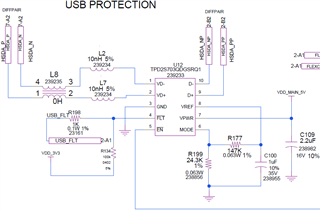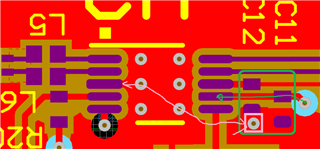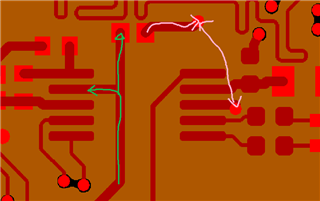Tool/software:
Hello,
We have the TPD2S703QDGSRQ1 in a released product, recently we're experiencing some issues with some boards.
Initially it was a very small number, but now we're noticing more failures where we losing communication at high speed.

Based on the above design, in a working circuit, Vmode =. 5V and Vref = 3.5V,
In a malfunction circuit, Vmode .64V and Vref = 4.57V.
Can you provide your expert advice on what would cause Vref to jump to 4.57V?
Thank you,
Tony





